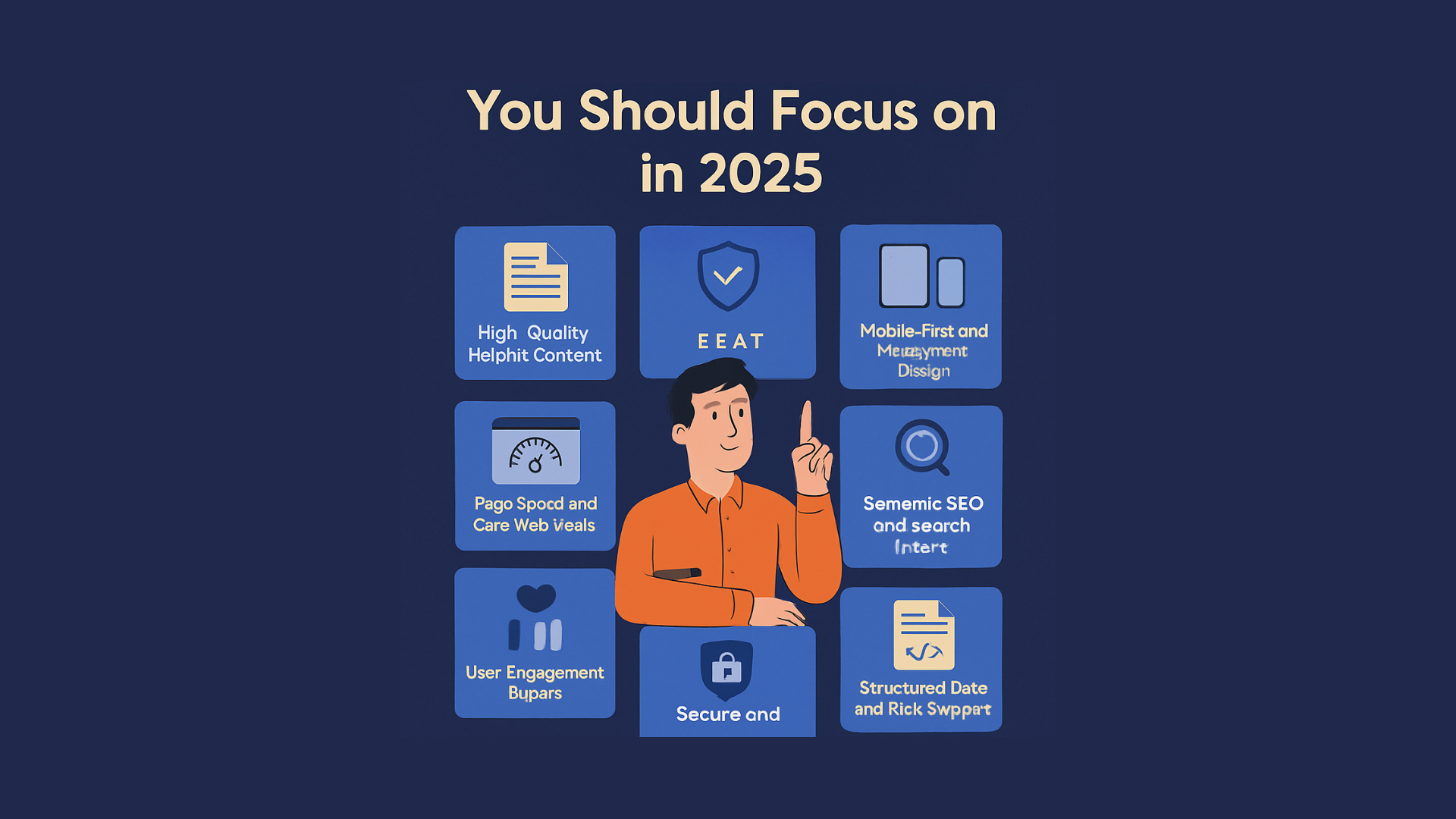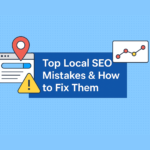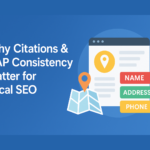- August 22, 2025
- Categories: SEO
- Tags:
Top Google Ranking Factors You Should Focus on in 2025
If you want your website to stay ahead in search results, you can’t rely on outdated tactics. Google’s algorithm has evolved significantly, and 2025 is all about delivering the best possible experience to users. Below, we’ll break down the most important ranking factors you should prioritize to improve your visibility, traffic, and conversions.
1. High-Quality, Helpful Content
Content remains the single most important ranking factor. Google’s Helpful Content System now actively evaluates whether your pages genuinely solve user problems or simply rehash what’s already out there. To stay ahead, focus on writing in-depth, original content that provides unique insights and real value.
Demonstrate first-hand expertise by sharing your own experiences, case studies, or research findings. Make sure you answer questions clearly and comprehensively so visitors don’t feel the need to look elsewhere. Enrich your pages with visuals, videos, and practical examples to enhance understanding. Before you hit publish, always ask yourself: Would someone bookmark this page or share it with a friend because it’s truly helpful?
2. E-E-A-T (Experience, Expertise, Authoritativeness, Trustworthiness)
E-E-A-T continues to guide Google’s assessment of website quality, especially in sensitive niches such as health, finance, and legal topics. To build your E-E-A-T, start by showcasing your author credentials and bios so readers can see why you’re qualified to speak on the topic.
Cite reputable sources, studies, and official publications to back up your claims. Work on building backlinks from recognized authorities in your industry, as these signals reinforce your trustworthiness. Collect and display genuine reviews and testimonials to show social proof. Finally, keep your content regularly updated to maintain accuracy and relevancy over time.
3. Mobile-First and Responsive Design
Today, over 60% of searches happen on mobile devices, and Google uses your site’s mobile version as the primary basis for indexing and ranking. Your website must adapt seamlessly across different screen sizes to ensure a positive user experience. Check that all buttons and links are easy to tap without frustration, and that fonts are large enough to read comfortably on small screens. Optimizing page load times for mobile visitors is crucial because slow performance can lead to high bounce rates and lost rankings.
4. Page Speed and Core Web Vitals
Page speed isn’t just a ranking factor—it’s also a key part of delivering a good user experience. Google measures this through Core Web Vitals, which include Largest Contentful Paint (LCP), First Input Delay (FID), and Cumulative Layout Shift (CLS). LCP tracks how quickly the main content loads and should be under 2.5 seconds. FID measures how fast your page reacts to user interactions and should stay below 100 milliseconds. CLS gauges visual stability as your content loads and should be under 0.1. Use tools like PageSpeed Insights and Lighthouse to pinpoint where your site falls short and make improvements accordingly.
5. Backlinks and Brand Mentions
Earning high-quality backlinks remains essential for building your website’s authority in 2025. However, the focus should be on quality over quantity. Prioritize securing editorial links from respected publications in your industry, as these carry more weight than generic directory links. Even brand mentions without a direct link can signal credibility to Google.
Consider guest posting on authoritative blogs and creating link-worthy assets like original research studies, useful tools, or comprehensive guides. Be careful to avoid manipulative link schemes, as they’re more likely to trigger penalties than improve your rankings.
6. Semantic SEO and Search Intent
Google has become extremely good at understanding the context behind searches, so simply optimizing for exact keywords isn’t enough anymore. You need to satisfy search intent to rank effectively. Start by grouping your keywords based on intent—whether the user wants information, plans to navigate somewhere, or intends to buy something. Cover related subtopics within your content to create a well-rounded resource. Using schema markup can also help Google interpret your pages more accurately and display rich snippets in search results.
7. User Engagement Signals
Although Google doesn’t officially confirm the weight of all engagement metrics, evidence suggests that factors like dwell time, bounce rates, and click-through rates (CTR) indirectly impact rankings. To improve engagement, write clear and enticing headlines that draw clicks, and pair them with a compelling meta description that encourages users to visit your page. Organize your content in a scannable, logical structure with headings, bullet points, and short paragraphs. Incorporate engaging visuals, videos, or interactive elements to keep visitors interested and reduce bounce rates.
8. Secure and Accessible Website
Having an HTTPS-secured site has been a ranking factor for years. If you haven’t migrated to SSL, now is the time—it signals to users (and Google) that your website is safe. Additionally, ensure your site is accessible to everyone, including users relying on assistive technologies. This not only helps with compliance but also demonstrates your commitment to a positive, inclusive user experience.
9. Structured Data and Rich Snippets
Schema markup helps your content stand out in search results by enabling enhanced listings such as FAQs, reviews, and event details. Common schema types worth implementing include FAQPage, Product, HowTo, Organization, and LocalBusiness. Adding structured data doesn’t just improve your visibility in the form of rich snippets—it also helps Google better understand your content and match it to relevant queries, which can boost your click-through rates.
10. Local SEO (If Relevant)
If you serve a local audience, local SEO factors can make or break your visibility in search. Make sure your Google Business Profile is complete and accurate, including hours, photos, and services. Keep your NAP (Name, Address, Phone) citations consistent across all directories and websites. Work on earning local backlinks from reputable organizations in your area. Encourage your customers to leave reviews and maintain a strong star rating. Finally, use location-specific keywords naturally throughout your content to improve your chances of ranking in local search results.




